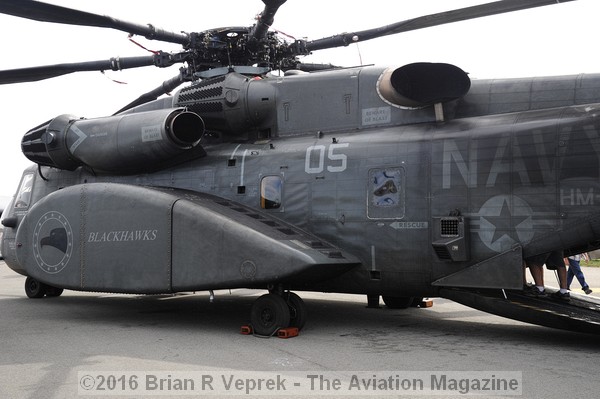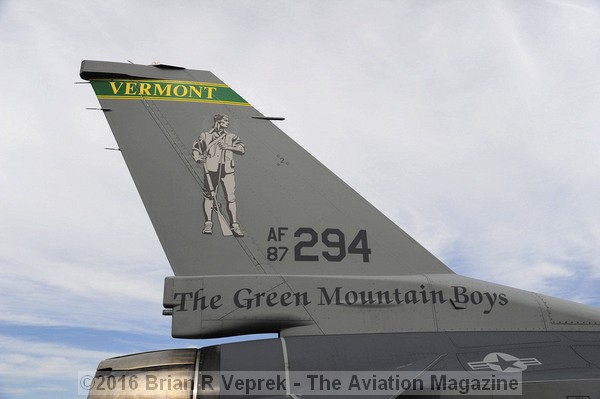|
|
 |
New York Air Show, September 3-4, 2016 |
 |
| Location: Stewart International Airport, New Windsor, New
York |
Admission: Adult:
$30, Child: $15 for children under 13, Photo Pit ($88), and Flight Line VIP
($131) |
| Parking: Free, Reserved parking $15, $20 for VIP
Parking. |
| Value:: Very Good |
| Rating out of 10: 8.5 |
| |
|
|
For the second consecutive year, Stewart International Airport located in New Windsor, New
York, hosted the New York Air Show. After the success of their 2015 air show - the first since
2003 - the organizers were excited for another opportunity to show off their beautiful airport
while showcasing many of our finest military airplanes, their pilots and crew.
On a picture-perfect weekend, September 3rd and 4th, thousands and thousands of delighted
spectators packed the grounds to take pictures of their favorite displays, talk with U.S. Air Force
members eager to answer questions, and watch the spectacular maneuvers of our amazing
pilots. |
Headlining the event were our Thunderbirds consisting of six F-16 Fighting Falcons piloted by
the best-of-our-best U.S. Air Force pilots. The Thunderbirds, also referred to as Vipers, were
introduced in the the U.S. Air Force in 1978 as all-weather, multi-role aircraft focusing on air
superiority as fighters equipped with an internal M61 Vulcan cannon and 11 locations for
mounting weapons and other mission equipment. Their 65-person entourage consisting of 8
pilots, 4 support staff and dozens of maintenance personnel, traveled from their home at Nellis
Air Force Base in Nevada via a C-17 Globemaster III. Despite a grueling 6 day-a-week
schedule for a 9 month season of 72 performances, the Thunderbirds were fresh and flawless.
They wowed the crowd with their precise formations while maintaining wing distances that
appeared non-existent and cross-over maneuvers that appeared like a guaranteed collision until
the masterful pilots passed one another with ease. While several Thunderbirds distracted us
with their performance, a few skirted behind the crowd to stun us all with their roaring flight
overhead. After shocking us all with their sudden appearance you could hear wow's, laughs
and applause from the delighted crowd. |
| The GEICO Skytypers aerobatic team was on-hand to perform stunts using SNJ-2 World War IIera
planes. They are called Skytypers because they perform low-level maneuvers while
creating aerial smoke messages. |
| A fan favorite, the F/A-18 Hornet jolted the crowd with its maneuvers and high-speed pass. This
twin-engine supersonic, all-weather, multi-role combat jet was designed as both a fighter and
attack aircraft (hence the F/A designation) and serves the US Navy and Royal Australian Air
Force from aircraft carriers and bases ashore. It has a top speed in excess of Mach 1.8 and
can carry air-to-air misses and air-to-surface weapons, supplemented by a 20mm M61 Vulcan
cannon. The fighter's primary missions are fighter escort, fleet air defense, Suppression of
Enemy Air Defenses (SEAD), air interdiction, close air support, and aerial reconnaissance. |
The size of a whale, the huge C-17 Globemaster III military transport aircraft seemed to
effortlessly glide of the runway. The C-17 is the home-town aircraft, flown by Stewart's 105th
Airlift Wing of the National Guard. Developed for the U.S. Air Force performs tactical and
strategic airlift missions, transporting troops and cargo throughout the world. The first C-17
squadron, the 17th Airlift Squadron, became operationally ready on January 17, 1995. Since
that time, the C-17 has broken 22 records for oversized payloads and was awarded the Collier
Trophy, the U.S. aviation's most prestigious award. The C-17 accompanies the President of the
United States on domestic and international trips. It is used to transport the Presidential
Limousine and security detachments. There have been several occasions where the C-17 has
been used to transport the President, himself, temporarily being assigned the Air Force One call
sign. In addition to providing service in the United States, the C-17 is also used by the United
Kingdom, Australia, Canada, Qatar, United Arab Emirates, NATO Heavy Airlift Wing, India, and
Kuwait. |
| The Black Knights, West Point's Parachute Team, provided a precision free-fall demonstration.
During their performance the Team worked together to build various formations then separated
to deploy their canopies to demonstrate their accuracy skills by landing on a target placed on
the ground. The Black Knights participate in the National Collegiate Parachuting Competition,
winning the title in 2013. |
The pristine B-25 "Panchito" performed at the air show - its twin 1700 horsepower to Wright
R-2600 engines rumbling in the sky. The B-25 was designed as a medium bomber, built to
operate at altitudes between 8,000 and 12,000 feet. While the basic configuration remained the
same throughout its production over 9,800 aircraft, there were many changes to its
armament depending on the squadron's mission. The armament variations included 75mm
cannons, rockets, and up to eighteen .50 caliber machine guns. Some B-25's were modified to
carry torpedoes. While the B-25's most famous mission was the Doolittle raid, B-25's played a
much larger role throughout World War II. They were used in all theaters of the war from Alaska
to North Africa, China, Europe and he Southwest Pacific. B-25's wee flown by the U.S. Air Force
and U.S. Marine Corps, as well as the air forces of Britain, Canada, Australia, Russian, China,
Brazil and the East Indies. The "Panchito", whose crew consisted of combat veterans and
recent trainee graduates, was assigned to the 41st Bomb Group - the first unit to attack the
Japanese home islands since the Doolittle Raids. The crew was preparing for their August 13,
1945 mission when at 5 o'clock in the morning when a loudspeaker announcement was made
"Mission for today cancelled - and all planes will leave for Manila at dawn." Japan had
surrendered.
An appearance was made by an Aero L-39 Albatros. This high-performance jet trainer was
designed during he 1960's in Czechoslovakia Aero Vodochody. In order to minimize damage
caused by inexperienced crew, this aircraft was designed with simplified onboard systems. Its
low landing speeds and rugged design of its landing gear enabled this aircraft to be flown from
difficult airstrips such as frozen lake beds. Several display teams, such as the Breitling Jet
Team, use the L-39.
A U.S. Coast Guard Search and Rescue (SAR) Team provided a demonstration of their rescue
techniques. SAR is one of the Coast Guard's oldest missions, involving multi-mission stations,
cutters, aircraft and boats lined by communication networks. To meet their responsibilities, the
Coast Guard maintains SAR facilities on the East, West and Gulf coasts; in Alaska, Hawaii,
Guam, and Puerto Rico, as well as on the Great Lakes and inland U.S. waterways. The Coast
Guard is recognized by the world as the leader in the field of search and rescue. |
| Kent Pietsch performed an aerobatic routine in his 800-pound, Interstate Cadet Jelly Belly
plane. Kent fell in love with flying when he was four years-old. While growing up in North
Dakota every day after school he would find his way to the airport and do whatever he could to
get into an airplane. One of his unique stunts includes landing on the rooftop of a moving RV. |
| David Windmiller and his Zivko Edge 540 performed gymnastics in the sky executing gyroscopic
tumbles, spins, aerial cartwheels, torque rolls and soaring feats of precision. The maximum
aerobatic weight of the aircraft is 1,550 pounds. It can climb 3,700 feet per minute, roll 420
degrees per minute and is strong enough to withstand 20 Gs.
Buck Roetman has been flying for over 35 years, experienced in more than 105 different types
of airplanes, from Cubs to corporate jets, logging more than 13,500 hours of flight time. At the
airshow, he flew his modified Christen Eagle with a Lycoming IO360 4 cylinder, 250 HP engine. |
On display were many planes including a B-1B Lancer Bomber, a MH-53E Sea Dragon
Helicopter, a C-130J Hercules airplane, and a F-16 from Vermont's Air National Guard Fighter
Wing. The B-1B Lancer is a four-engine supersonic, variable-sweep wing, jet-powered, heavy
strategic bomber used by the U.S. Air Force. It was manufactured as a low-level penetrator with
long range and Mach 1.25 speed capability at high altitude. It entered service in 1986 with the
USAF Strategic Air Command as a nuclear bomber. However, in the early 1990's it was
converted to a conventional bomber. It served its first combat missions during Operation Desert
Fox in 1998 and again during the NATO action in Kosovo in 1999. The B-1B has supported the
U.S. and NATO in Afghanistan and Iraq. It is expected to continue to serve in the 2030's. |

|
| MH-53E Sea Dragon
|
|
The MH-53E Sea Dragon helicopter currently has two missions - the Airborne Mine Counter
Measure mission and the Navy Vertical Onboard Delivery mission. It incorporates GPS,
Doppler Radar, and an Approach/Hover/Tow Coupler. Its overall length is 99 feet and stands at
28 feet, 4 inches. It weighs 69,750 pounds and can fly at speeds up to 172 miles per hour. It
can fly up to 10,000 feet without supplemental oxygen and has a range of 770 nautical miles. Its
crew consists of two pilots and 1-6 aircrew, depending on the mission.
The C-130J Hercules is a four-engine turboprop military aircraft capable of using unprepared
runways. Although it was originally designed as a troop, medevac, and cargo transport aircraft,
its versatile airframe has enabled it to be used in other roles, including as a gunship for airborne
assault, search and rescue, scientific research support, weather reconnaissance, aerial
refueling, maritime patrol, and aerial firefighting. It is now the main tactical airlifted for many
military forces worldwide.
Vermont's Green Mountain Boys displayed one of their F-16 Fighting Falcons. The Green
Mountain Boys originally started in the late 1760's as a militia to protect the settlers moving into
Vermont. In 1775 the Green Mountain Boys became part of the Continental Army and defended
our border with Canada. The 158th Fighter Wing was formed in 1946 and have used F-16's
since the late 1980s. They have played an important role in protecting our country and
interests. Most recently, following the September 11, 2001 terrorist attacks, the Green Mountain
Boys performed missions in support of Operations Noble Eagle, Enduring Freedom in
Afghanistan and Iraqi Freedom. |
 |
| Performers included: |
USAF Thunderbirds
GEICO Skytypers
USN F/A-18 Hornet
C-17 Globemaster
The Black Knights, West Point's Parachute Team
B-25 "Panchito"
L-39 Albatros
U.S. Coast Guard Search and Rescue (SAR) Team
Kent Pietsch - Interstate Cadet
David Windmiller - Zivko Edge 540
Buck Roetman - Christen Eagle
|
|
Report and photography by Brian R. Veprek for
|
|